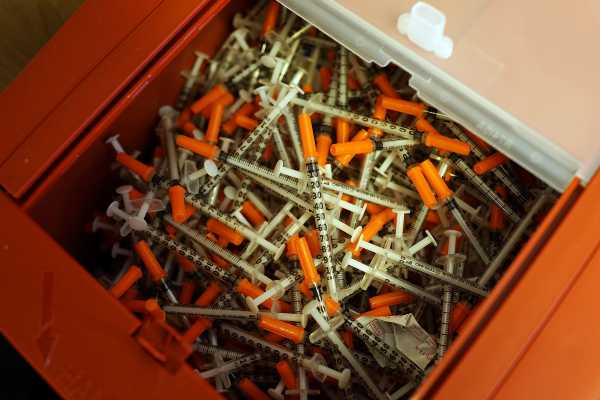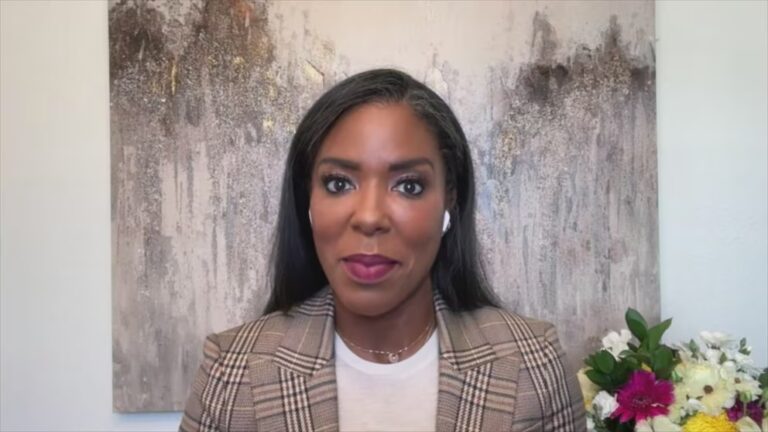
Two cities in America — Seattle and Philadelphia — are now moving forward with a bold approach to help prevent more drug overdose deaths: supervised drug consumption sites.
The facilities, also known as safe injection sites, provide a space where people can use drugs, legal or not, with sterile injection equipment — such as new syringes — and the supervision of trained staff, who are ready with the opioid overdose antidote naloxone if anything goes wrong.
The idea: While in an ideal world no one would use dangerous and potentially deadly drugs, many people do. So it’s better to give these drug users space where they can use with some sort of supervision in case of problems It’s a harm reduction approach. And here’s the thing: Studies show that it works.
Drawing on more than a decade of studies, the European Monitoring Centre for Drugs and Drug Addiction (EMCDDA) last year concluded that supervised drug consumption facilities led to “safer use for clients” and “wider health and public order benefits.” Among those benefits: reductions in risky behavior that can lead to HIV or hepatitis C transmission through shared needles, drops in drug-related deaths and emergency service call-outs related to overdoses, and greater uptake in drug addiction treatment, including highly effective medications for opioid addiction.
These facilities are often met with local resistance, out of fear that these services may draw more drug users to a neighborhood. But the research suggests, according to the EMCDDA, that these facilities lead to less public injecting and fewer syringes discarded in the area — both of which can benefit local communities. The facilities also weren’t linked to higher crime in Sydney, Australia, or Vancouver, Canada — and, in fact, were linked to reduced street disorder and encounters with police.
Related
How to stop the deadliest drug overdose crisis in American history
“These services facilitate rather than delay treatment entry and do not result in higher rates of local drug-related crime,” EMCDDA concluded.
Supervised drug consumption sites are highly controversial in the US, with no such facilities yet open with legal permission anywhere in the country. But they are getting renewed attention as one part of the solution to the opioid epidemic. In 2016, nearly 64,000 people died of drug overdoses in the US — an all-time high — and at least two-thirds were linked to opioids, including heroin and illicit fentanyl.
Some of that may be due to federal pushback. In a recent statement about supervised injection sites in Vermont, the US Department of Justice, led by Attorney General Jeff Sessions, warned that the facilities “would violate federal law.”
But there’s also a common refrain that these facilities simply would not work in the US — even if they work, as the research shows, in Europe, Canada, and Australia.
A harm reduction group set out to prove that wrong. In secret, it opened a supervised consumption site in the US in September 2014 — and while it’s kept its identity and location secret from the general public, the group invited several researchers to study the results. The researchers have now put out two studies with their findings so far, published by the American Journal of Preventive Medicine and the International Journal of Drug Policy.
Peter Davidson, of the University of California in San Diego, was unequivocal about his findings: “The big takeaway from this research and all the data we have so far is that these kinds of facilities have a similar effect here in the United States as they do elsewhere: They reduce harms associated with drug use and they reduce social nuisance associated with drug use in the same way they do elsewhere.”
To get a better understanding of how a supervised drug consumption facility could work in the US, I spoke with Davidson earlier in January about his research and the facility that he tracked. What follows is our discussion, edited for length and clarity.
German Lopez
What was your big takeaway from your research?
Peter Davidson
One of the things people have said about opening safe injection facilities in the United States is that the US situation is fundamentally different from that of other countries where it’s being used successfully. It’s an argument that just because it can work in Europe or Australia or Canada doesn’t mean that it’ll work here.
The big takeaway from this research and all the data we have so far is that these kinds of facilities have a similar effect here in the United States as they do elsewhere: They reduce harms associated with drug use and they reduce social nuisance associated with drug use in the same way they do elsewhere.
German Lopez
On the point of the US not being unique, does it come down to drug users having the same problems and needs that users do in other countries? I went to Vancouver last year, and the things I heard from drug users there were very similar to what users tell me here. Is that why this kind of facility would work here as well as it would in other countries?
Peter Davidson
Yeah. Basically, anywhere that you have a concentrated street-based drug scene involving a lot of fairly impoverished people using drugs, you get the same set of problems, and the people using drugs have the same set of problems. And these facilities deal with them quite well, and it doesn’t really matter whether they’re in Vancouver or in Los Angeles in Skid Row or any other downtown area with a lot of drug use anywhere in the world.
German Lopez
How did staff get this facility going?
Peter Davidson
This is an organization that was providing other services to drug users. They were in this really frustrating situation where they had a lot of people they provided services to who were dying of overdoses. After looking at safe injection rooms and how those work elsewhere in the world, they realized that if they waited for advocacy [to legalize these facilities] in the United States to do one above ground — and I think it was the executive director who said this — all their people would be dead.
So after a good deal of discussion about it, they decided they wanted to implement something along these lines. Initially, they started by reequipping the bathroom of their facilities so it was better suited for safe drug consumption. They did that for a few months, and they realized that had too many logistical difficulties — too many people needed to use this one space, it stopped the bathroom from being used for its original purpose, and it was generally just too chaotic.
They had a spare room available, so they refitted that. They modeled it after the Vancouver facility and opened their doors to a group of their longer-term users of their services. And they’ve continued ever since.
German Lopez
What does this facility look like? How do they ensure safety and that kind of thing?
Peter Davidson
It’s a fairly large room with five separate stainless steel injecting stations. Then there’s another seat with a laptop computer, where the staff normally sit. So the staff is in the same room as people.
People come in, do a check-in on the laptop computer, sit at an injecting station, and prepare and then use their drugs. Then there’s a couch if they want to sit there and wait for the immediate effects of the drug to wear off.
The staff that’s in the room is trained to use naloxone and, if necessary, call 911.
The staff, since they’re in the same room, can watch people injecting, and if they watch someone do some injecting practices that are less than ideal from a public health point of view, there’s an opportunity to do that. So there’s a number of benefits to having the staff member in the same room rather than just overdose prevention.
German Lopez
What are some of those less-than-ideal injection practices? I think most people know about the risk of reusing needles, but what else is there?
Peter Davidson
No one’s allowed to reuse needles. There’s a large supply [of new needles] in that room, so that’s not an issue at all.
The sort of thing I’m thinking of is they’re injecting in less-than-ideal veins when they still have better ones available. They also may not be using the needle properly so that they’re more likely to push dirt in there. They also may not clean their skin before they use, increasing the risk of abscesses. There are all these sorts of micro-practices that lead to soft-tissue infections and so on.
German Lopez
What do users like about the facility?
Peter Davidson
The biggest one that they kept talking about is how they’re able to get out of the public eye, take their time, and use in a clean, well-lit space.
People talked about using in the public eye and shooting up in a hurry between two cabs in the streets. They were very much aware of passersby — not just because it’s illegal, but because they’re aware that it’s not seen as a nice thing. They’re particularly terrified of being seen by someone’s children.
So being able to get out of the public eye was very much a relief.
German Lopez
Rushing, just as much as an inconvenience, can be a public health concern because if you’re injecting quickly, you might not be as careful about making sure that you clean your skin, you’re using a new needle, and that kind of thing. Right?
Peter Davidson
Right. It’s a lot easier to make mistakes.
You also have a bolus effect with opioids: If you have a bolus full of opioids and you inject very quickly, that bolus remains concentrated and when it gets to your brain, it can trigger an overdose that wouldn’t have happened if you had done it more slowly. So it increases the risk of overdose as well.
German Lopez
Did users have complaints about the facility?
Peter Davidson
Mostly that it wasn’t open 24/7. They really like the space, and they would like it to be open far more often.
A couple of them also talked about the problem with how the organization couldn’t closely coordinate or do referrals to other agencies because they were trying to keep this all on the down-low. Users were quite aware of this, saying, “Okay, when I’m ready to go to treatment, it would be better if this organization was really closely coupled with a treatment agency and that hand-off could be much better.”
There were a couple people and the staff [who] were also quite bothered by the fact that they had to keep the facility to a fairly small number of people and felt like they had to exclude people with mental health issues — because they felt like [including them] would be more likely to lead to
German Lopez
This seems obvious in retrospect, but one of the things that surprised me reading this paper is that there are upsides to the unsanctioned nature of this facility. What were those like?
Peter Davidson
This isn’t something I was expecting to find.
The simplest upside is that there wasn’t a long, bureaucratic process to get the place approved. The people in the organization talked about doing this, but once they ultimately decided that they wanted to do this and that it was worth the potential risks, it took them about two weeks to open their doors. It happened very quickly.
Another thing that often happens with places that provide services to people who use drugs is you can get a NIMBY [not in my backyard] effect — in which local residents are concerned that this will act as a honeypot drawing more people to the neighborhood, causing them to be opposed to the new service. But because no one knows this is even there, there’s no NIMBY effect.
The other benefit is the rules and structures of the space were very much developed by and for the people who are using the space. I think if a department of health was designing one of these from scratch in a top-down kind of way, they would come up with things that aren’t necessarily closely aligned with what users want and need — and that would certainly exclude some people. In this case, I don’t think that’s happened.
German Lopez
We’ve seen some of that before with needle exchanges. When these began popping up in the US in the 1980s, they were really strict about how you have to trade in a used needle to get a new one. Nowadays, some places are much less strict about that. But with political controversy comes more rules, which may not be evidence-based.
Peter Davidson
Yeah. There’s still some of that; I was talking to a county needle exchange last week, and they still have one-for-one exchange or one-for-one-plus-a-couple-needles — even though we have at this point all this research showing that’s a bad idea that doesn’t result in less needle trash.
When these things were first authorized and came above ground, they tended to have all sorts of restrictions because people were somewhat justifiably concerned about unintended negative consequences. But in a lot of places, things change slowly — and they’re still stuck with some of those things 30 years later, even though we now have the evidence base to say that was a bad idea.
German Lopez
What were some of the downsides to the unsanctioned nature of the facility?
Peter Davidson
The single biggest one is having to tightly manage the people that they were serving, and hold other organizations at arm’s length — which made referrals to places for substance use treatment more difficult. You still get referrals, but you don’t get that tightly coupled hand-off that tends to be most effective when organizations work closely with one another. They didn’t want anyone else to know what they were up to, so they couldn’t really have close relationships with other organizations.
German Lopez
Would you say that the downsides of being unsanctioned outweighed the upsides?
Peter Davidson
Most people were very much of the mind that this would be much better if this could be aboveground. The staff very much wanted to serve more people, and the users — while they liked having this small, intimate, clubhouse-like space for themselves — were very much aware that there were many, many other people in their communities who didn’t have access and really needed it.
Both the staff and the users were also aware that what they were doing was in a gray area legally; they would very much like not to be taking that legal risk too. So certainty would be good.
German Lopez
So do you think this is something that should be tried in more places in the US?
Peter Davidson
Yeah. I know of maybe 10 or 15 cities where there’s some active discussion or advocacy around trying one of these facilities.
I think the evidence around the world shows that pretty much anywhere where you have a concentrated drug use scene, these facilities can be useful. They may not be that useful out in the suburbs, where you don’t have this concentrated effect — and different solutions are needed in those places. But in urban areas or any other areas with concentrated drug use, I think these [facilities] have potential value and should be tried.
German Lopez
Something I’ve seen a lot covering the opioid epidemic is that many of these ideas face a lot of resistance despite overwhelmingly positive research behind them. What do you think causes that resistance? Is it stigma? Is it something else?
Peter Davidson
Some of it is stigma.
Some of it is we’ve had this war on drugs going on since [President Richard] Nixon. A huge amount of effort has gone into a particular way of dealing with drugs in society. There’s a lot of institutional inertia around that. So suggesting something that, on the face of it, goes completely against what we’ve been trying to do for the last 40 or 50 years, people are going to push against that — particularly the people who have been doing this for years. People can be very slow to change their minds about things.
German Lopez
Anything else you’d like to add?
Peter Davidson
It’s more difficult to do this sort of evaluative research on something that’s underground or illegal. There are logistical limitations on how you can do it. It would be much better if we could do an official, aboveground trial to see if this is a good idea in the US.
German Lopez
Right. This seems to be constant Catch-22 with drug policy: People demand research for some of these policy interventions, but it’s much harder to test the interventions because they’re prohibited, so in the end, you keep the status quo.
Peter Davidson
Right. Exactly.
Sourse: vox.com





